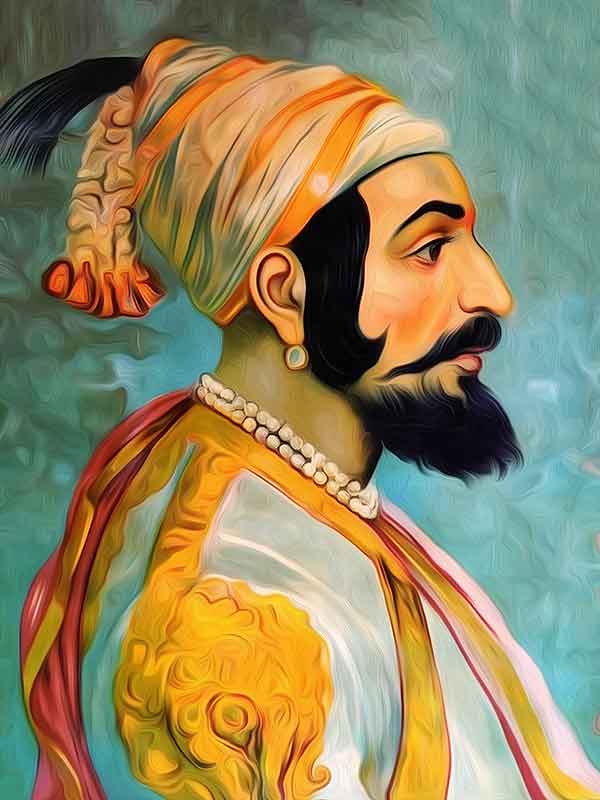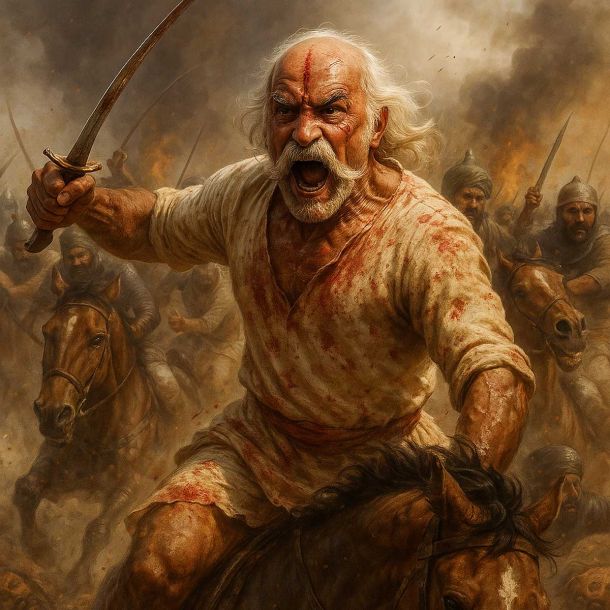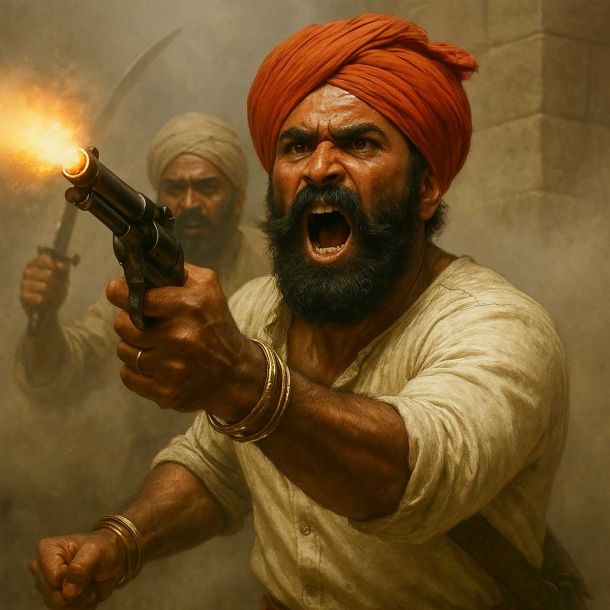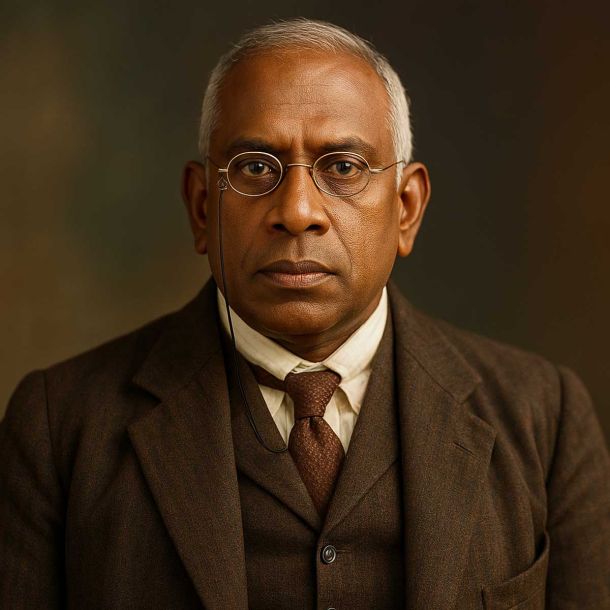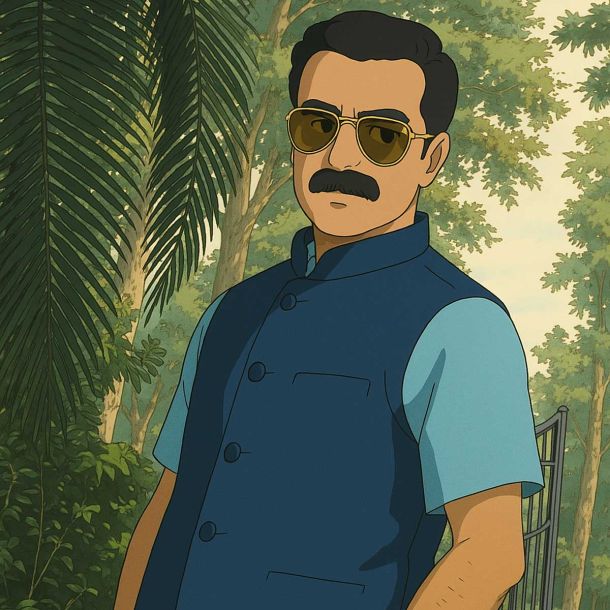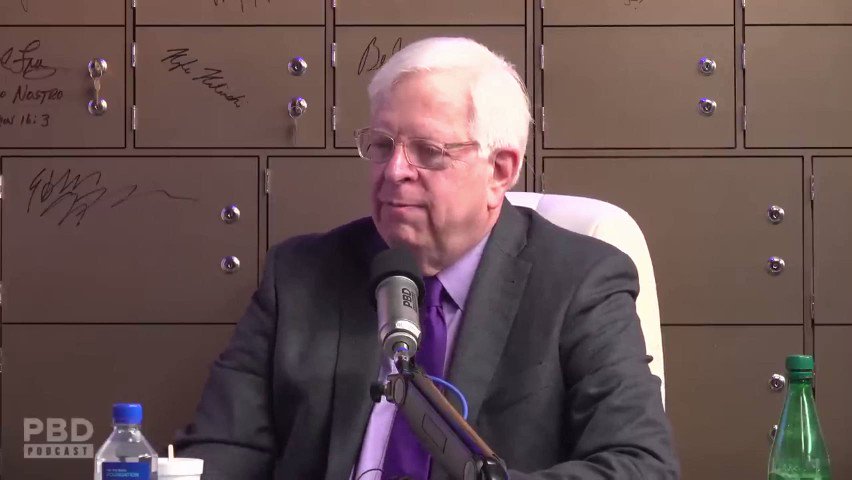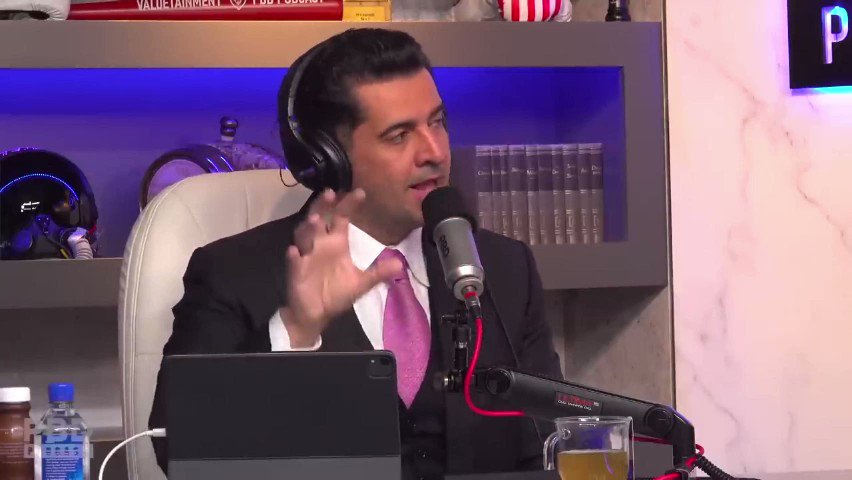MORE COVERAGE
Twitter Coverage
Satyaagrah
Written on
Satyaagrah
Written on
Satyaagrah
Written on
Satyaagrah
Written on
Satyaagrah
Written on
JOIN SATYAAGRAH SOCIAL MEDIA
As 241 lives perished in the Air India 171 crash, Rajdeep Sardesai shamelessly paraded a TikToker in a pilot costume to blame dead pilots—only to watch his ‘expert’ flip-flop when RAT footage exposed the truth: it was engine failure, not human error

In an age where social media rewards the outrageous, some people have made a dark art of turning tragedy into traction. But when this hunger for attention finds support from mainstream media houses, the damage is not just to public discourse—it’s to truth itself.
|
|
On 12th June 2025, India woke up to one of its worst aviation disasters in recent memory. A London-bound Air India flight, a Boeing 787 Dreamliner, took off from Ahmedabad but didn’t stay in the air long. Within minutes, the aircraft crashed, killing 241 people on board. Among them were 169 Indian citizens and 53 from the UK, according to multiple official sources. The debris also devastated buildings at the BJ Medical College campus, adding to the civilian toll.
As families grieved and the nation stood in shock, television studios scrambled to feed the 24/7 news beast. IndiaToday anchor Rajdeep Sardesai, never one to miss a primetime opportunity, chose to feature an American TikToker dressed in a pilot costume and armed with no verified data—Captain Steve Scheibner. A self-proclaimed aviation expert, Steve was introduced as if he were a crash investigator rather than a content creator.
Steve didn’t hold back. Even before the black box or the voice recorder had been recovered from the wreckage, he had already found his culprits: the pilots. On live television, Steve laid the blame squarely on the late Captain Sumeet Sabharwal and First Officer Clive Kunder, who together had clocked over 9,000 hours of flying experience. His theory? That they might have made a rookie mistake during takeoff. The former Navy pilot claimed that the cockpit crew could have “accidentally retracted the flaps instead of the landing gear during the initial climb.” He painted the picture as one of human error, solemnly describing it as “a tragic mistake.”
Elaborating further, Steve added with full confidence, “If that happens, it’s big — and that explains why the aeroplane stopped flying. The lift over the wings died because the flaps were retracted too early.” This wasn’t presented as mere opinion. On national television, in the middle of breaking news coverage of a horrific tragedy, it was positioned as insight.
And Sardesai? He didn’t ask for any evidence. No challenge. No professional pushback. He simply let this TikToker’s unverified assumption ride the airwaves. The pilots—who were not only dead but had given everything to try to save the aircraft—were accused on-air with no chance to defend themselves. It was trial by television, powered by a man who’d become popular for videos and opinions, not investigations or verified aviation credentials.
What made the whole episode even more grotesque was the way Steve was presented. An older American man with a uniform and an accent, confidently speaking about lift and gear and thrust, seemed enough to convince Rajdeep Sardesai and several other networks. CNBC-TV18 also gave him airtime, and soon a wave of channels followed suit. In a surreal sequence of events, Steve was seen across multiple platforms floating not just the pilot error theory but also offering other possible causes like power loss, fuel contamination, a bird strike, or flap configuration error—all said without even a fraction of confirmed data from aviation authorities.
Oddly, Steve also contradicted himself on the very subject of engine performance. In his YouTube videos and during media appearances, he insisted there was no sign of immediate engine failure. “We can see both engines. There’s no indication they’re not producing thrust — no sparks, no flames. Everything looked smooth,” he stated. This was puzzling, especially since several emerging videos pointed toward a completely different possibility—one that didn’t match his version of events.
Indian mainstream media gave airtime to a conspiracy theorist: Sensationalism over sensitivity
Only in India, perhaps, can a man better known for short-form videos become a key voice in national coverage of an aviation disaster. As investigators were still trying to understand what had gone wrong, Captain Steve’s version of the story—based on gut feeling, not ground data—was aired across Indian and British media. That a co-pilot might have confused the flap switch for landing gear was not just suggested but repeated in prime slots as if it were a verified finding.
“...suggesting that co-pilot Clive Kunder may have mistakenly raised the flaps instead of retracting the landing gear, causing a loss of lift.” That was the crux of Steve’s assumption, echoed by media that seemed more interested in sensationalism than sensitivity. The result? A narrative that tarnished two dead professionals' careers even as their families hadn’t yet come to terms with their deaths.
|
Boeing and aviation tragedies
As expected, no primetime anchor stepped forward to question the legitimacy of Steve’s claims. Not Rajdeep Sardesai, not his producers, not any editor in the chain of command. Instead, they allowed the TikToker’s commentary to divert attention from Boeing’s track record. The aircraft involved in the crash was a 787 Dreamliner, a model with a history that aviation experts have repeatedly scrutinized for technical and software vulnerabilities.
While Steve conveniently brushed aside engine failure, experienced pilots began pointing to the Ram Air Turbine (RAT)—a device that automatically deploys only when both engines have lost power. Multiple eyewitnesses and analysts, including Steve in a follow-up appearance, noted the presence of RAT, a critical detail contradicting his earlier claims. Meanwhile, Boeing’s stock dropped nearly 5% on the day of the crash, and concerns over the company’s manufacturing practices resurfaced quickly. In 2024, Boeing had suffered from a string of scandals including quality issues, unresolved safety complaints, and a seven-week strike that drained nearly $1 billion per month from its operations.
Adding to that, the company has still not recovered from its involvement in the twin disasters of the 737 Max in 2018 and 2019, which claimed 346 lives. Just last month, Boeing secured an agreement with the U.S. Department of Justice that shielded it from criminal charges in those cases, despite growing public backlash and demands for accountability.
Back in India, the coverage reached even more bizarre levels. AI-generated visuals showed former Gujarat Chief Minister Vijay Rupani as a passenger in the ill-fated flight—false and completely fabricated. Reporters shoved microphones into the faces of mourning families. And yet, Steve's baseless commentary continued being broadcast.
While the public needed responsible journalism, what they got was a well-dressed man from the internet spinning theories, hosted by TV anchors who never once asked: where is the proof?
As for Rajdeep Sardesai and IndiaToday, the decision to give Steve a platform had less to do with truth and more to do with optics. His delivery was polished, his voice assured, and his image—an aging man in a uniform—visually convincing. But it takes more than a uniform and a TikTok following to speak responsibly about a national tragedy. Sadly, what should have been a moment for compassionate reporting turned into yet another episode of noise over news.
Below is Part 2, rewritten with creativity, clarity, and a human touch. All quotes and facts are preserved verbatim and in context. Additional details from credible sources are woven in to enrich the narrative and ensure originality.
|
Captain Steve takes U-turn after more facts emerge about the cause of the Air India crash
As if elevating a TikToker to “aviation expert” wasn’t bad enough, Captain Steve Scheibner later made a public reversal—inflicting further embarrassment on Rajdeep Sardesai’s show. When sharper footage caught a small yet crucial detail—the deployment of the Ram Air Turbine (RAT)—Steve swiftly shifted his stance.
In a new YouTube video, Steve pointed to a dual engine failure, citing the RAT’s activation, the survivor’s account of a loud bang and flickering lights, and reports of the pilots’ mayday call indicating a sudden loss of thrust. Having built fame with his “pilot-error” theory, Steve now credited the RAT deployment as a turning point—even as he continued enjoying global attention, more views, and a rising follower count.
Media outlets saw their ratings soar—but at the steep cost of peddling false narratives when families needed facts. This misdirection was a disgraceful mockery of victims and their loved ones.
While Steve drove headlines and followers from the U.S., Indian media clung to his words, sidelining seasoned local aviation professionals who could have guided discussion responsibly. On screen, sensational quotes replaced sober analysis. Speed mattered more than accuracy. TRP trumped empathy. An allegedly qualified “expert” with no direct role in the crash investigation got more airtime than those who truly understood Indian aviation.
The shamelessness reached its peak the moment Rajdeep Sardesai aired a TikToker-turned-aviator who’d spun conspiracy theories—and then posted on X, perhaps half-joking, half-confessing:
“Important: Captain Steve now changes his theory on Flight AI 171. Says ‘dual engine failure’ most likely cause. Qs remains: why would 787 BOTH engines flame up suddenly? Net‑net: Too many ‘experts’ injurious to health. Best to wait for black box reveal.”
|
|
It took Steve’s embarrassing flip for Sardesai to quip that “Too many ‘experts’ [are] injurious to health.” It seems he’d discovered only now that jumping to conclusions without hard evidence does more harm than good.
Steve Scheibner—a former U.S. Navy pilot who flew P‑3 aircraft and now flies commercially—has over 620,000 YouTube subscribers. He’s known for handing out paper and pens to flight passengers, answering their questions with humor and technical flair, then sharing the Q&A online. It’s a clever model—but one that laid the groundwork for reckless speculation too.
Earlier this year, Steve made headlines in Delhi after being “rebuked by the Delhi Air Traffic Controller for not taxiing fast enough at Indira Gandhi International Airport.” His aircraft, taxiing at 12 knots at maximum gross weight, was sent to a “penalty box”—off the active runways. A video published on 25 March 2025 showed Steve brimming with pride about the incident .
Indian channels could have instead invited seasoned Indian pilots or aviation experts from Boeing, DGCA or AAIB to speak on probable causes—especially when the black box was yet to be analyzed.
But gripped by the idea that “an American in uniform must know better,” broadcasters and anchors like Rajdeep Sardesai gave Steve a platform—trading verified insight for a polished image. The result: unverified claims amplified, grieving families sidelined, public trust eroding.
When journalists choose quick sensationalism over careful reporting, they betray both their profession and the people they claim to serve. The cycle—from hype to backtrack—will persist unless the media recommits to patience, verification—and respect for truth over theatrics.
 Support Us
Support Us
Satyagraha was born from the heart of our land, with an undying aim to unveil the true essence of Bharat. It seeks to illuminate the hidden tales of our valiant freedom fighters and the rich chronicles that haven't yet sung their complete melody in the mainstream.
While platforms like NDTV and 'The Wire' effortlessly garner funds under the banner of safeguarding democracy, we at Satyagraha walk a different path. Our strength and resonance come from you. In this journey to weave a stronger Bharat, every little contribution amplifies our voice. Let's come together, contribute as you can, and champion the true spirit of our nation.
 |  |  |
| ICICI Bank of Satyaagrah | Razorpay Bank of Satyaagrah | PayPal Bank of Satyaagrah - For International Payments |
If all above doesn't work, then try the LINK below:
Please share the article on other platforms
DISCLAIMER: The author is solely responsible for the views expressed in this article. The author carries the responsibility for citing and/or licensing of images utilized within the text. The website also frequently uses non-commercial images for representational purposes only in line with the article. We are not responsible for the authenticity of such images. If some images have a copyright issue, we request the person/entity to contact us at This email address is being protected from spambots. You need JavaScript enabled to view it. and we will take the necessary actions to resolve the issue.
Related Articles
- "Diving deep into the Congress-China connection reveals a web of ties": Jairam Ramesh's Huawei affinity, the Gandhis' MoU with CCP, and closed-door meetings; such undisclosed affiliations raise questions about transparency and India's sovereignty
- "When the ink reveals more than the words": Over 255 prominent Indian citizens wrote to President of India and CJI urging for a thorough inquiry into NewsClick's suspicious funding from Neville Roy Singham, a figure connected to Chinese media machinery
- "Academic Ambition or Anti-National Agendas": The arrest of ISIS-linked students at AMU, including Faizan and Abdul, raises critical concerns about radicalization in educational institutions, challenging India's approach to campus security and ideology
- Param Bir Singh misused his power and authority in Kesab's inquiry and destroyed his phone: Shocking claims of former ACP
- "Make the lie big, make it simple, keep saying it, and eventually they will believe it": Salvatore Babones - 'Survey is done by intellectuals, journalists & academics of that country. Reports are biased because India's intellectual class is anti-India'
- "Victim Card Activated": Ex-cricketer Danish Kaneria shuts down 'The Wire's' senior editor, Arfa Khanum Sherwani, "Come to my country Pakistan if you are feeling ashamed to be an Indian," Sherwani, in turn, cries "online lynch mob" as the plot thickens!
- "Tragedy is a sharp contrast between what is and what could have been": Odisha train tragedy, which claimed the lives of 289 people has taken a new turn following the interrogation of junior engineer (JE) Amir Khan by the Central Bureau of Investigation
- NRI sister levels serious allegations against Sidhu, says ‘He kicked mother out of the house immediately after father's death ceremony for money and left her to die unattended at railway station’
- NewsClick's covert ties with China unveiled: a web of deceit spanning shell corporations, activists, and propaganda, revelations from the ED and New York Times spotlight Neville Roy Singham at the epicenter of a global Chinese influence scheme
- Gujaratis are agitated and are taking PM Modi’s security breach in Congress-ruled Punjab personally: In their hearts, Modi is still ‘their man’
- "RAW Officer Who Vanished in 2004": The Making of India’s Most Dangerous Double Agent, Rabinder Singh who leaked 212 secret files, exposed agents, collapsed RAW’s networks, and fled to the U.S. via Nepal with CIA help in India’s worst betrayal ever
- Top woke Vir Das chose Kennedy Centre for his Monologue 'Two Indias' to insult Bharatvarsh: Major backlash; netizens shocked
- New York Times looks for anti-Hindu, anti-Modi candidates to spread propaganda: Dissecting the dangerous job opening
- "Today I realise how lucky we are as Indians”, from staunch critic to newfound admirer, Shehla Rashid's 'epiphany' lauds PM Modi's peace efforts in Kashmir. Perhaps, it's the aftertaste of recent prosecution sanctions that's led to this change of heart
- "Dressed in the lion's skin, the ass spread terror far and wide": IB flags security threat from Lashkar-e-Taiba, Jaish-e-Mohammed, and other radical Jihadi groups ahead of I-Day, recommends monitoring areas with Rohingyas, cites Kanhaiya Lal murder too
